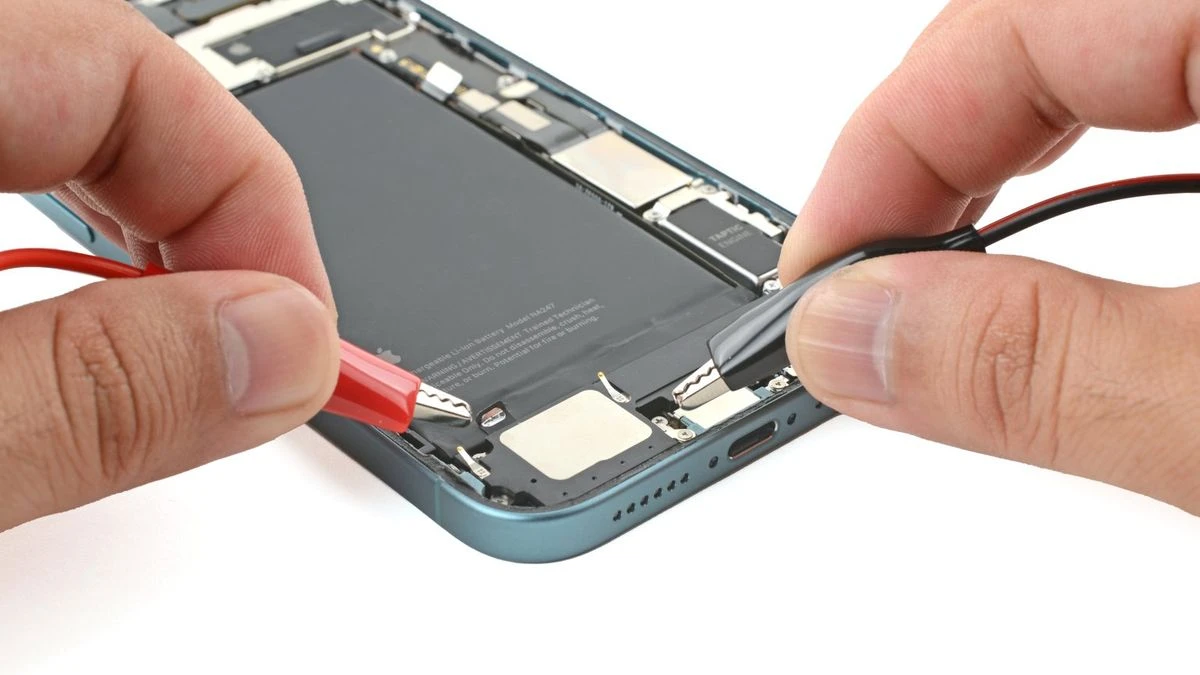The new iPhone 16 is proof that we are winning the battle for the right to repair.
Apple iPhone 16 is more repairable than the predecessor. iFixit, a leading authority in digital device repairability, has confirmed this. Apple's latest handset has been given a score of seven out of ten for repairability by the tip-top teardown team. This is a significant upgrade from the iPhone 15's score of four out of ten. What accounts for the iPhone 16’s improved repairability, then?
Apple had a detailed, well-written and complete repair manual available for the launch of its new handsets. The internals are also well-organized for independent and easy access to many components.
"The layout is smart. It prioritizes access to critical repairs such as battery and camera replacement. In previous models, it was common to see, for instance, battery pull tabs being blocked by the Taptic Engine. This was then blocked by the speaker, which in turn was blocked a large grounding bracket. All of this had to be removed in order. The 16's design allows for independent access to the Taptic Engine and the Taptic Engine speaker, as well as the camera, display, backcover, and other components. It's very thoughtfully laid out," iFixit states.
There are some other interesting innovations. Battery extraction on new non-Pro versions of the iPhone 16 is facilitated by a new electrically-activated adhesive that debonds on demand.
This new, fancy sticky stuff can debond if you pass an electric current through it. This means that you can stop using finicky, brittle, adhesive strips and instead use a consistent, repeatable process.
The iPhone 16 Pro non Max (that is, the Pro version, but not the larger Pro versions) has an odd battery design. It has a metal case, but no debanding adhesive.
iFixit noted that iOS 18’s new "Repair Assistant” software also helps to smooth the integration and activation for newly-fitted components. iFixit reports that "it worked impressively well on our vanilla iPhone 16": it took just one click to pair all components and calibrate them at once.
Apple's motivation is the one question that remains unanswered. Has Apple suddenly realised the importance of making repairs easier for its customers? Apple has finally realised that making iPhones difficult to repair and manufacturing billions of them has all sorts of negative implications for sustainability and electronic waste?
Maybe. It's true, however, that walls are closing from a regulatory and legislative perspective. The EU's new right-to-repair law requires that device manufacturers publish repair manuals.
Oregon and California are also in various stages of implementing the right-to repair rules. All in all, and with the new iPhones as a backdrop, it is fair to say there are many victories in the fight to be able to repair the devices we have all paid for.
Is the war over now? We wouldn't go so far. Apple is a major player in the digital devices market, no matter what you think. Apple's devices becoming easier to repair is good news for the entire industry.




Comments